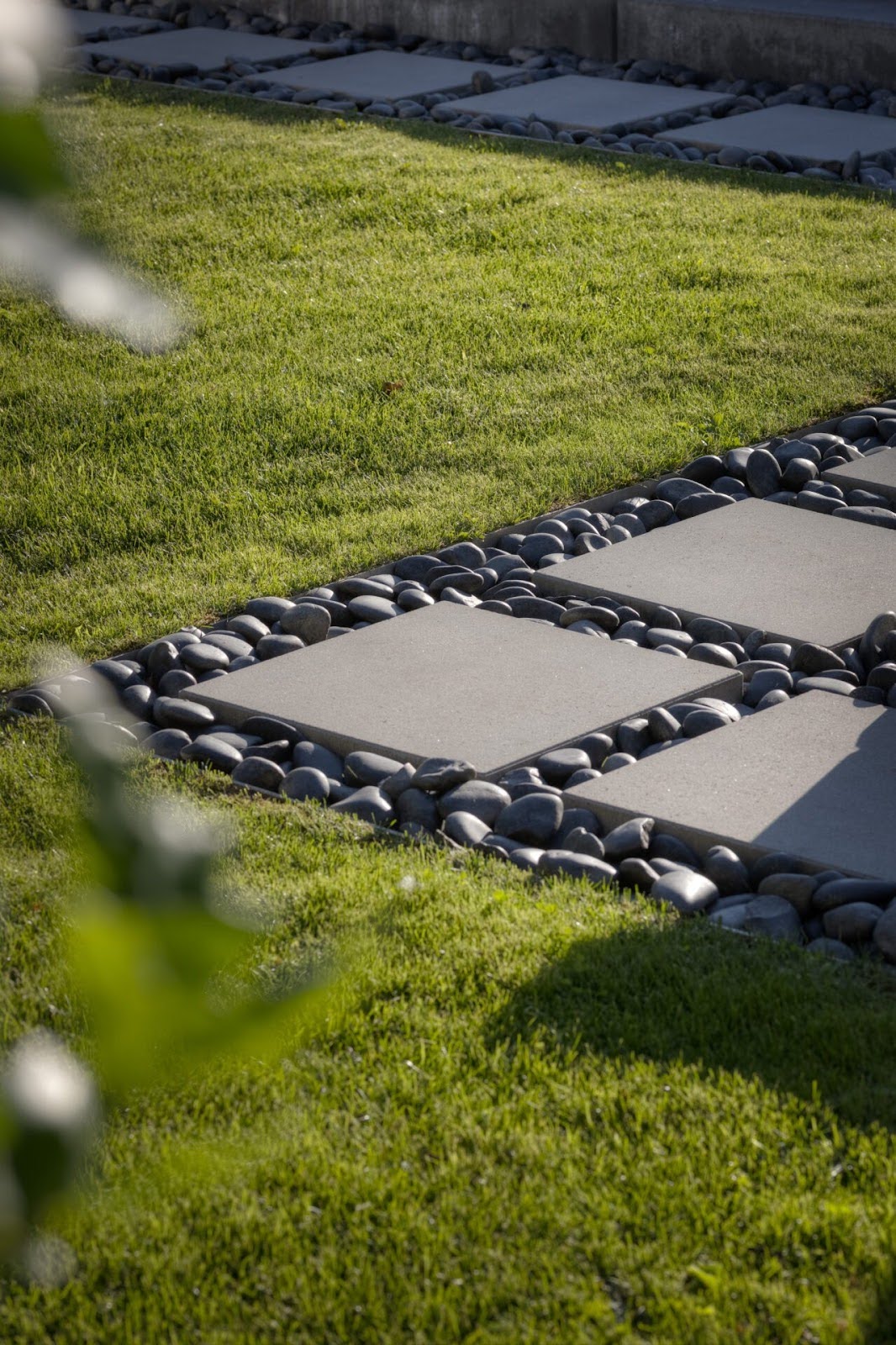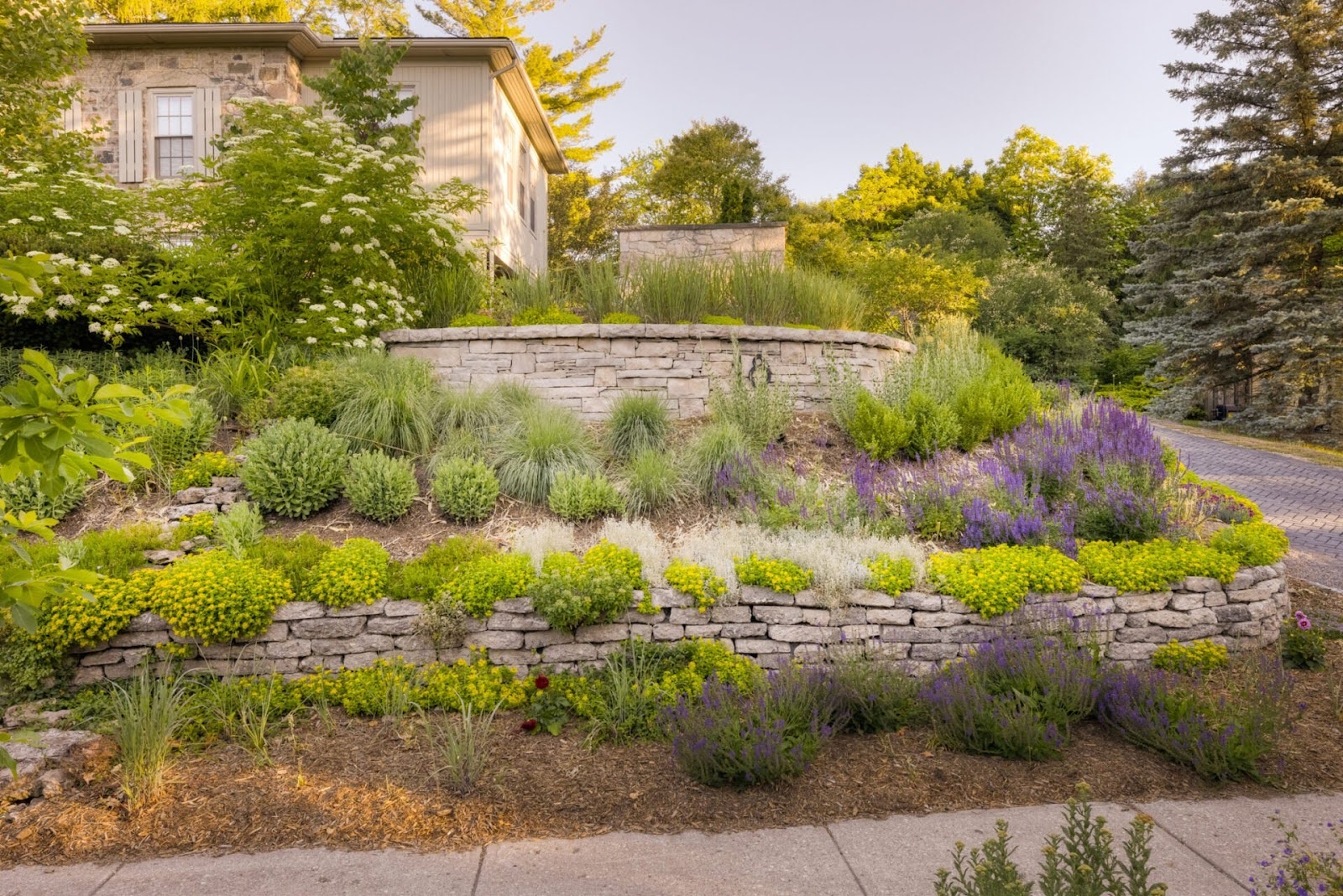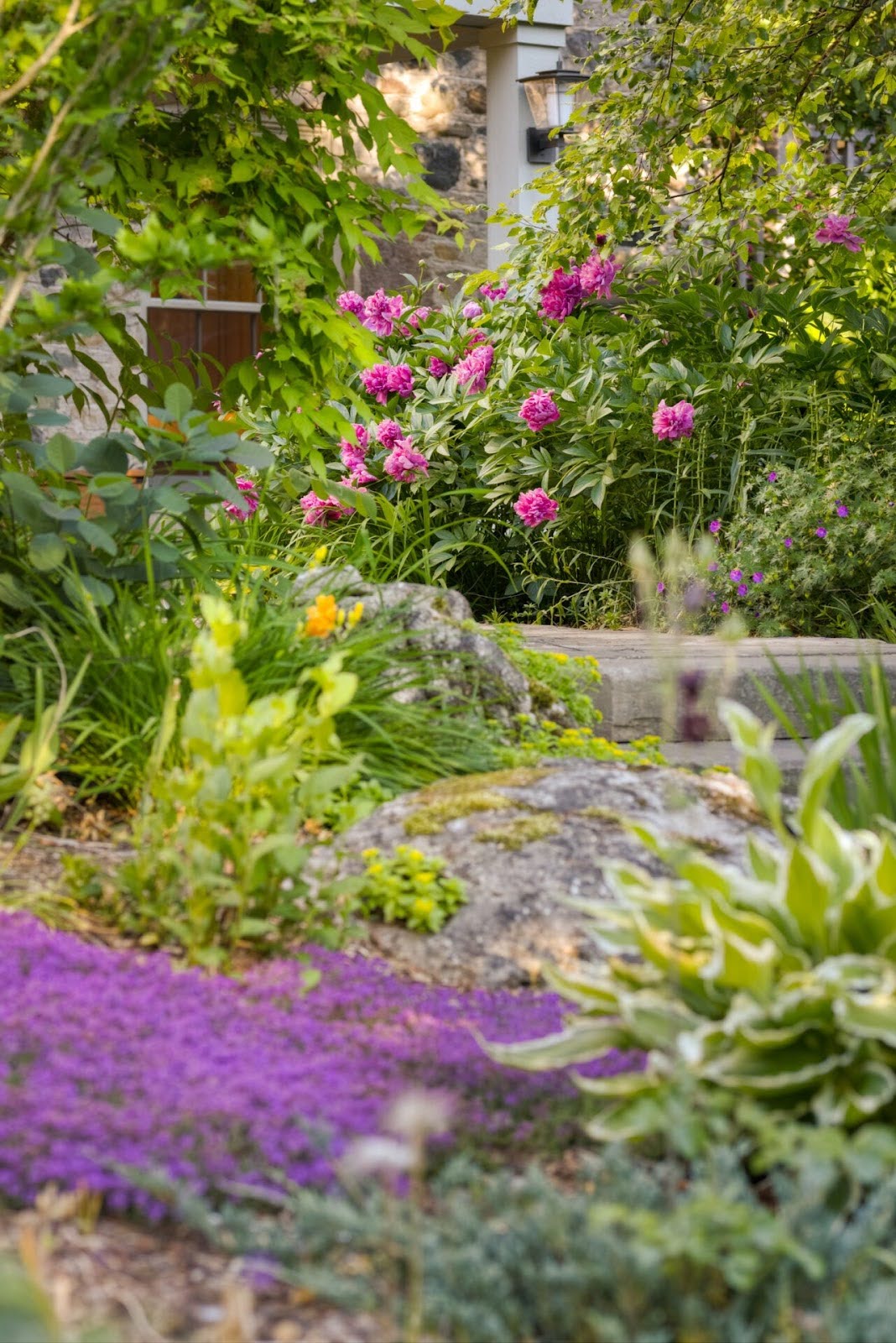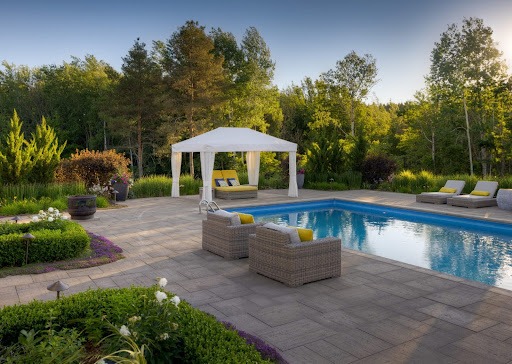Have you ever thought about how your outdoor space could do more than just look beautiful? What if it could also support local ecosystems, manage water responsibly, and reduce your environmental impact? Many homeowners dream of a lush landscape that doesn’t come at the expense of the environment.
Traditional landscaping practices often rely heavily on water, chemicals, and energy, which can strain natural resources. But sustainable landscaping offers an alternative, an approach that works with nature, not against it. By incorporating eco-friendly techniques and materials, you can create an outdoor space that thrives year after year while respecting the environment.
In this guide, we’ll explore key principles of sustainable landscaping and how to implement them, from using native plants to installing rain gardens and permeable pavers. Whether you’re starting from scratch or enhancing an existing yard, these ideas will help you design a greener, more resilient landscape.
What Makes a Landscape Sustainable?

Sustainable landscaping focuses on creating a self-sustaining outdoor environment that minimizes resource use and supports biodiversity. Here are some key elements:
- Efficient Water Use: A sustainable landscape prioritizes water conservation. This means choosing plants that require minimal watering, incorporating efficient irrigation systems, and managing stormwater effectively.
- Soil Health: Healthy soil is the foundation of a thriving garden. Sustainable practices like composting, mulching, and avoiding chemical fertilizers help maintain soil fertility and structure.
- Biodiversity: A diverse landscape supports a wide range of wildlife, from pollinators like bees and butterflies to birds and small mammals. Incorporating a variety of plant species creates a balanced ecosystem.
- Minimal Chemical Use: Reducing or eliminating chemical fertilizers and pesticides is crucial for a sustainable landscape. Instead, natural alternatives and integrated pest management techniques can keep plants healthy without harming the environment.
Native Planting for Biodiversity & Water Savings

Using native plants is one of the most effective ways to create a sustainable landscape. Native species are adapted to the local climate and soil, making them more resilient and less reliant on water and fertilizers.
- Why Choose Native Plants? Native plants have evolved alongside local wildlife, providing essential food and habitat. They are also more drought-tolerant, reducing the need for irrigation.
- Designing with Native Plants When incorporating native species, aim for a mix of trees, shrubs, and perennials to create layers of vegetation. This not only enhances visual appeal but also supports a diverse range of wildlife.
- Examples of Native Plants
- Trees: Oak, maple, and dogwood.
- Shrubs: Serviceberry, elderberry, and sumac.
- Perennials: Coneflower, black-eyed Susan, and milkweed.
Using Permeable Pavers for Driveways & Patios

Traditional paved surfaces often exacerbate environmental challenges, contributing to water runoff that carries pollutants into nearby waterways and intensifying urban heat. Permeable pavers offer a sustainable alternative, providing both functional durability and environmental benefits. By allowing water to pass through, these pavers promote natural filtration and reduce runoff, helping maintain a healthy balance in your outdoor space.
Choosing the Right Type of Permeable Pavers
- Porous Concrete: Porous concrete is designed with small voids that allow water to seep through while maintaining structural strength. It’s an excellent choice for larger areas like driveways, where durability and drainage are essential. When paired with natural stone accents, porous concrete can create a modern yet earthy aesthetic.
- Interlocking Pavers: Interlocking pavers are crafted with intentional gaps that are filled with gravel or sand, enabling water to flow through freely. These pavers come in various designs, making them ideal for patios and walkways. Their modular nature also allows for creative patterns and layouts, offering both beauty and practicality.
- Gravel Systems: Gravel systems involve a grid structure filled with gravel, providing a permeable surface that blends seamlessly with a natural landscape. This option is perfect for rustic or garden-themed areas, adding texture and charm while ensuring excellent drainage.
Benefits Beyond Drainage
Permeable pavers do more than just manage water flow. They offer several long-term advantages:
- Stormwater Management: By reducing runoff, permeable pavers help prevent flooding and erosion, especially during heavy rains. Instead of overwhelming drainage systems, rainwater is gradually absorbed into the ground.
- Groundwater Replenishment: Unlike traditional paving, which diverts water into storm drains, permeable pavers allow rain to filter through and recharge groundwater supplies. This contributes to a healthier local ecosystem.
- Cooling Effect: Conventional paved surfaces retain heat, contributing to the urban heat island effect. Permeable pavers mitigate this by allowing heat to dissipate more effectively, keeping your outdoor spaces cooler during hot summer months.
Design Tips for Seamless Integration

To make the most of permeable pavers, consider these design strategies:
- Pair with Native Plants: Surround driveways and patios with native plants that thrive in local conditions. The combination of permeable pavers and drought-tolerant greenery not only enhances the visual appeal but also supports biodiversity.
- Create Functional Zones: Use different types of permeable pavers to define specific zones in your outdoor space. For example, opt for gravel systems around garden beds and interlocking pavers for seating areas. This approach creates visual interest while maintaining a cohesive design.
- Incorporate Edging for Stability: Proper edging ensures that pavers stay in place over time, especially in high-traffic areas. Stone or metal edging can add a polished touch while keeping the layout intact.
- Blend with Other Natural Materials: To achieve a harmonious look, combine permeable pavers with other natural materials such as wood, stone, or mulch. This not only elevates the aesthetic but also reinforces the sustainable ethos of the landscape.
By thoughtfully integrating permeable pavers into your outdoor space, you can create a functional, eco-friendly landscape that manages water effectively while offering beauty and comfort. Whether for a sleek modern patio or a charming garden path, these pavers strike the perfect balance between nature and design.
Mulching & Erosion Control Best Practices

Mulching is a simple yet powerful technique that enhances the health of your soil while keeping your landscape visually cohesive. When used properly, mulch conserves moisture, regulates soil temperature, prevents erosion, and reduces weed growth.
Types of Mulch for Different Applications:
- Organic Mulch: Organic mulch includes materials like bark, wood chips, straw, and compost. These types of mulch gradually decompose, enriching the soil with nutrients. Use organic mulch around garden beds and trees to improve soil health over time.
- Inorganic Mulch: Inorganic options, such as gravel, river stones, or landscape fabric, do not decompose but provide excellent coverage for areas where plant growth is not desired. They are ideal for pathways, driveways, or decorative features.
Best Practices for Applying Mulch:
- Layer Thickness: Apply a 2 to 3-inch layer of mulch around plants. Too thin a layer won’t be effective, while too thick a layer can prevent proper air circulation.
- Avoid Mulch Volcanoes: Keep mulch away from direct contact with plant stems or tree trunks to prevent rot and disease.
- Refresh Annually: Organic mulch breaks down over time, so replenishing it annually helps maintain its benefits.
Erosion Control Strategies:
On slopes or areas prone to erosion, mulch works best when combined with other stabilizing elements:
- Plant Ground Covers: Ground cover plants like creeping thyme or vinca help anchor the soil while providing additional greenery.
- Use Retaining Walls or Terraces: On steeper slopes, retaining walls or terraced planting beds can prevent runoff and keep the landscape stable.
- Install Erosion Control Fabrics: These fabrics can be placed beneath the mulch layer on slopes to provide additional soil stability
Sustainable Landscape Maintenance Tips

Once you’ve designed a sustainable landscape, ongoing maintenance ensures that it continues to thrive with minimal environmental impact. Sustainable maintenance practices help reduce resource use while keeping your outdoor space vibrant and healthy.
- Water is a precious resource, and using it efficiently is key to sustainable landscaping. Install drip irrigation systems that deliver water directly to plant roots, minimizing waste. Water early in the morning or late in the evening to reduce evaporation.
- Instead of discarding yard waste, compost it to create nutrient-rich soil amendments. Grass clippings, leaves, and plant trimmings can all be turned into compost, reducing landfill waste and enhancing soil health.
- Regular pruning encourages healthy growth and prevents overcrowding. Prune trees and shrubs during their dormant seasons to promote resilience. Avoid over-pruning, as this can stress plants and reduce habitat for wildlife.
- Consider using electric or manual gardening tools instead of gas-powered ones to reduce emissions. Maintaining sharp tools ensures clean cuts, which promotes faster plant healing and healthier growth.
By incorporating native plants, rain gardens, permeable pavers, and eco-friendly maintenance practices, you can enjoy an outdoor space that thrives naturally.
If you’re ready to transform your property into a sustainable and beautiful outdoor space, contact Elements Hardscaping Inc. for a consultation today.

